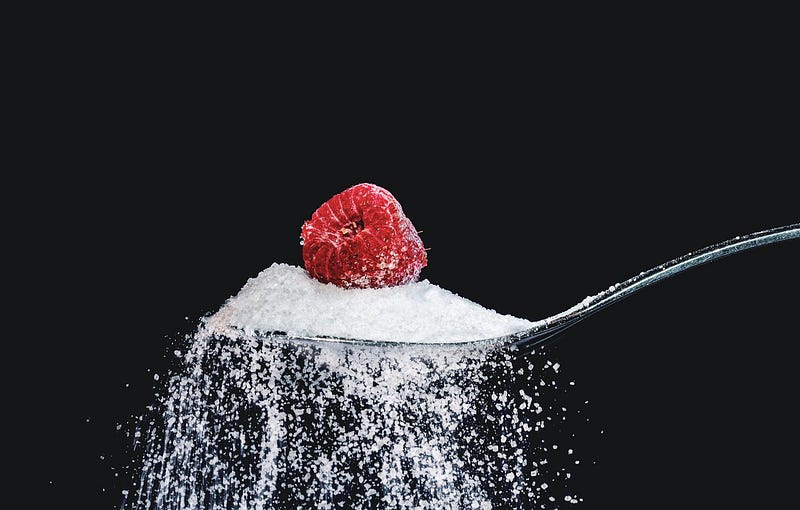Chapter 1: The Hidden Epidemic of Blood Sugar Imbalance
Many individuals are oblivious to the fact that a significant portion of the adult population suffers from elevated blood sugar levels. Surprisingly, one in three adults is estimated to have prediabetes, a condition not limited to those diagnosed with diabetes.

A staggering 90% of people may have excessive glucose in their bloodstream without realizing it. This can manifest through various symptoms, including:
- Cravings
- Fatigue
- Infertility
- Acne
- Premature aging signs
If left unaddressed, these imbalances can escalate into severe health issues, such as type 2 diabetes, cardiovascular diseases, cancer, and dementia.
My personal interest in blood sugar management began during a challenging fertility journey. After experiencing two miscarriages within nine months, I delved into research to understand the underlying causes. I encountered a study published in Fertility and Sterility, which highlighted that insulin resistance could contribute to miscarriages by being detrimental to early placenta cells.
My initial reaction was confusion regarding the term "insulin resistance." When I think of insulin, I typically associate it with diabetes. However, being in my early 30s, moderately active, and a long-time vegetarian, I believed I was in good health. Yet, upon examining the symptoms related to insulin resistance, I began to recognize some familiar patterns:
- Frequent urination: I attributed this to my high water intake.
- Frequent snacking: I enjoyed snacks in the afternoon and evenings.
- Cravings for sweets: Who doesn’t indulge after dinner?
- Dry skin: I thought it was simply genetic.
- Feeling cold: I often relied on a hot water bottle for warmth.
- Hair loss: I noticed an unusual amount of hair in the drain.
This realization made me question my health more critically. (Discover 28 additional symptoms of insulin resistance here!)
Section 1.1: Defining Insulin Resistance
Under typical conditions, insulin is secreted to facilitate the breakdown of sugars from food, directing them into muscles and cells for energy utilization. However, when blood sugar levels are excessively high, cells become resistant, resulting in a surplus of unutilized sugar circulating in the bloodstream.
Sugar’s presence in our diets can be deceptive, often found in unexpected products. For instance, processed carbohydrates like bread, pasta, and cereals break down into glucose. While fruits contain natural sugars that can spike blood sugar levels, their health benefits often outweigh the downsides, though moderation is still advisable.
Section 1.2: The Prevalence of Prediabetes
Approximately 96 million Americans—one in three adults—are affected by prediabetes, with the CDC estimating that 80% of these individuals are unaware of their condition. This indicates a concerning reality: if you’re an adult in the U.S., there’s a high likelihood you may have prediabetes, which poses risks for severe health conditions including dementia, heart disease, and strokes. Moreover, prediabetes and insulin resistance can lead to issues like infertility, miscarriages, and polycystic ovary syndrome (PCOS).
Chapter 2: Reversing Insulin Resistance
The silver lining is that prediabetes is entirely preventable and reversible through lifestyle adjustments. Research by Dr. Ben Bikman suggests that optimizing the macronutrient composition of meals can enhance metabolic activity. He advises that no more than 20% of daily caloric intake should come from carbohydrates, as these significantly impact glucose levels and insulin resistance.
In addition to dietary modifications to reduce or eliminate sugars and processed carbohydrates, several practical strategies can help stabilize blood sugar levels, allowing for occasional indulgences without significant repercussions. In her acclaimed book, Glucose Revolution, Jessie Inchauspe outlines simple techniques for maintaining stable blood sugar, such as consuming foods in a specific order to prevent rapid absorption and pairing carbohydrates with healthy fats or proteins. For example, instead of having plain toast or an apple, one might top them with nut butter for added nutritional balance. Another effective method is to incorporate movement within an hour post-meal to help mitigate blood sugar spikes. For further insights, I recommend following Jessie on her Instagram account, Glucose Goddess.
Ultimately, I've grown increasingly aware of my blood sugar levels and believe it’s time for everyone to take this issue seriously. Excessive sugar intake can be detrimental to overall health, potentially leading to various unnoticed problems.
To better understand my own glucose levels, I’ve decided to use a continuous glucose monitor. I look forward to sharing my findings in the coming weeks!
